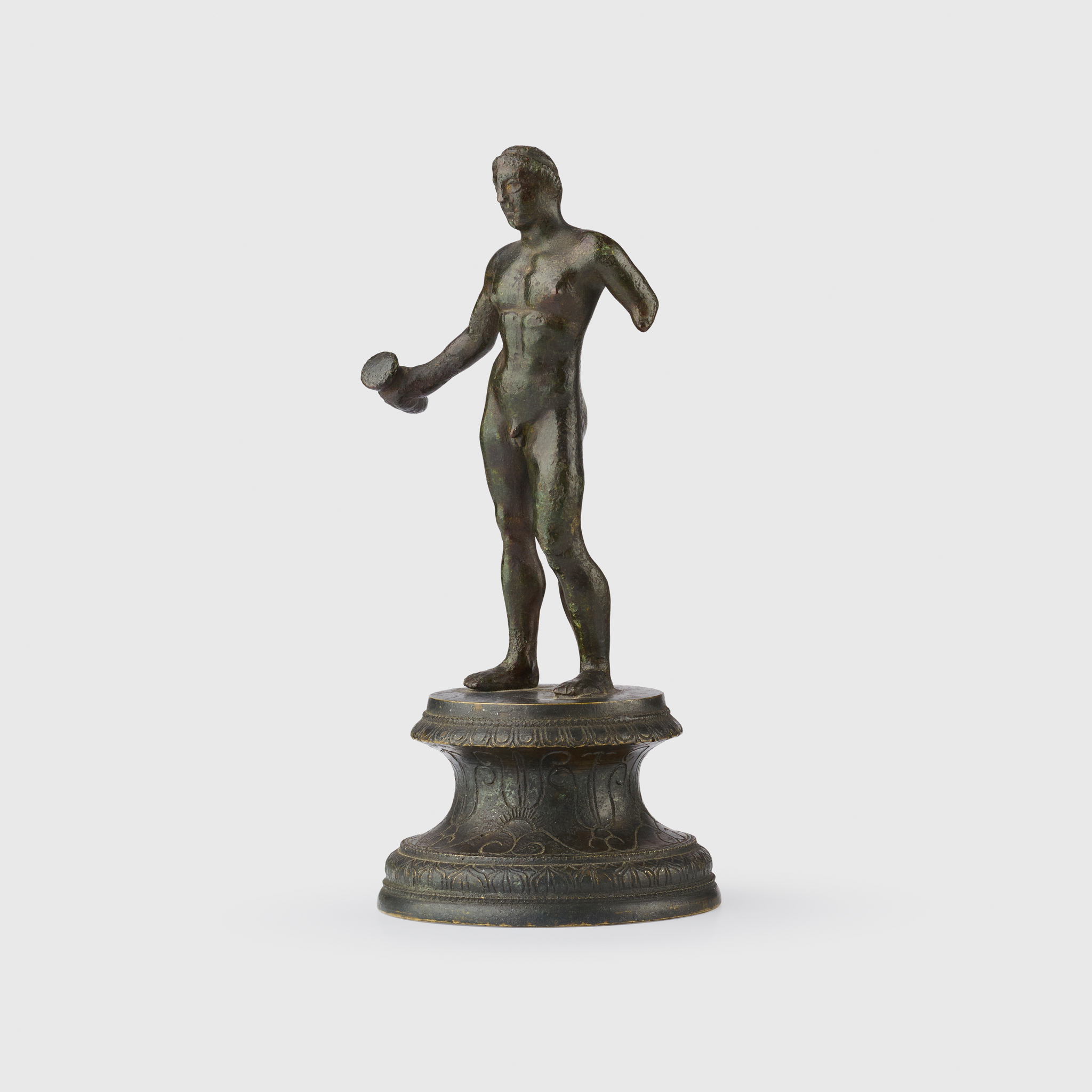ETRUSCAN BRONZE FIGURE OF HERCULES
NORTHERN ITALY, C. 4TH CENTURY B.C.
Estimate: £2,000 - £3,000
Auction: 13 March 2025 from 13:00 GMT
Description
cast bronze, the figure shown standing with nude muscular figure standing with the weight on his right leg, his right arm raised once brandishing a club, now missing, his hair bound by a diadem
Dimensions
16.8cm tall
Provenance
Old French collection, passed down by descent, the stand suggests a 19th-century collection date, for comparable examples, see those from the De Clercq Collection
Footnote
Etruscan bronze figurines of Hercules reflect a fusion of indigenous artistic traditions and Greek iconographic influence, particularly through the depiction of the hero with his characteristic lion skin and club. Produced primarily between the 6th and 3rd centuries BCE, these bronzes were often used as votive offerings in sanctuaries, suggesting a religious and protective function. Over time, their stylistic evolution mirrors broader artistic developments in Etruscan and Italic art, shifting from rigid, archaic forms to more dynamic and naturalistic representations. The lost-wax casting technique, widely employed in their production, allowed for intricate detailing in musculature, drapery, and facial expressions, demonstrating the technical skill of Etruscan metalworkers. These depictions emphasise Hercules’ role as a cultural hero and divine protector, reinforcing his association with strength, endurance, and divine favour. The widespread discovery of such figures across central Italy, particularly at sites such as Veii and Vulci, attests to their significance within Etruscan religious and artistic traditions. The influence of these early Etruscan representations can be traced in later Roman depictions of Hercules, where the hero became a central figure in both public and private art. Roman sculptors adopted and expanded upon the Etruscan tradition, producing grander and more idealised forms in marble and bronze, ultimately elevating Hercules to an imperial symbol of power and virtue, as seen in the large-scale statues commissioned by emperors such as Commodus and Maximian.

